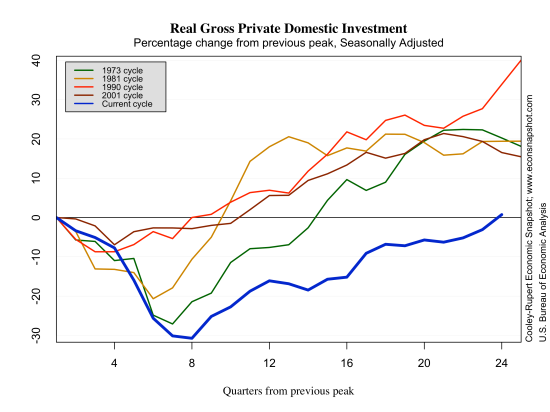GDP Report
The third (and final) estimate of real GDP for the third quarter from the BEA reveals another large upward revision, from 2.8% in the advance estimate to 3.6% in the second, and now to 4.1% annualized growth. As mentioned in an earlier post, much of this increase came from the big pop in inventory investment (contributing 1.67 percentage points to the 4.1% increase)–likely meaning it will be unwound over the coming quarters.
The drop in government spending over the last several years is also of note. As mentioned by the Action Economics team: “We now have a 6.4% cumulative drop in real government spending since Q2 of 2010, versus a smaller 3.8% drop after the Vietnam War but a larger 11.8% drop after the Korean War.”
There was also a large revision in the new intellectual property category, from 1.7% to 5.8%; however, the category is still too new to make any comments about expected revisions.
One negative that stands out for the overall health of the economy is the rise in both initial and continuing claims. Claims are averaging 374k in December, higher than September and October. As always, there may be many “explanations” delivered ex-post….such as “the holiday season”, “computer glitches in California”, “storms”, etc. Be that as it may….initial claims have moved up over the past couple of months.
Of course the big news of the week was the Fed’s announcement of the taper. Bond purchases will be cut back by $10 billion per month. The reaction in the economy was somewhat tepid.














